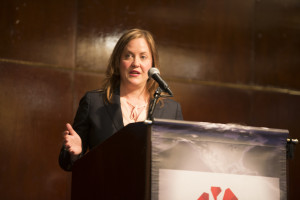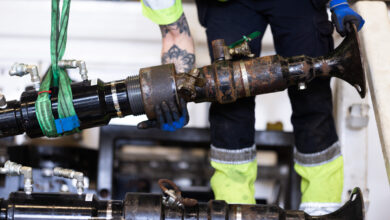IADC Leadership Model identifies, measures X factor to success

Identifying whether an employee can technically perform his or her job is straightforward, but identifying and measuring non-technical skills, such as leadership, can be much more difficult. Because leadership can be a vague term, with many possible interpretations, IADC has created the Leadership Model to help organizations define, measure and manage leadership knowledge, skills and abilities within the oil and gas context. Speaking on 3 February at the 2016 IADC HSE&T Conference in Houston, Dr Sheree Ahart, who co-leads the IADC Leadership Subcommittee, explained how the model works and the importance of identifying and developing leadership skills.
The impact of poor leadership is compromised safety and reliability, as well as a high turnover and the associated costs of filling vacated spots and training new employees. On the flip side, great leadership leads to an engaged and more productive workforce and, ultimately, fewer errors and incidents. Therefore, Dr Ahart said, leadership can be considered an X-factor, a variable that can have the greatest impact on the outcome of a given situation. “If we don’t have the right people with the right set of leadership skills in place, then the management system, the facilities and the equipment we have will be irrelevant,” said Dr Ahart, who works in Leadership Development and Talent Management at Noble Drilling.

To identify and measure the leadership skills required to make a company successful, the IADC Leadership Subcommittee – which includes operators, drilling contractors, service companies and representatives from community colleges – conducted brainstorming sessions over a period of several months. The result of these sessions was the IADC Leadership Model.
The model consists of four key standards: driving communication, developing talent, maximizing performance and exemplifying professionalism and stewardship. Each standard is tagged with a series of Knowledge, Skills and Abilities (KSAs) that would be required to demonstrate competency. Additionally, the standards and associated KSAs address leadership at different levels, from the individual level to the team leadership level to the organizational leadership level. These KSAs roll up, Dr Ahart explained. The first few KSAs under each standard apply to everyone from the individual up to organizational level, and the next few apply to team the team level and up, while the final KSAs under each standard apply only at the organizational level of leadership.
The full IADC Leadership Model will be accessible online soon, and it can be integrated into training and competency assurance programs, Dr Ahart said. Rather than providing vague leadership training, the model will pinpoint specific behaviors allows for much more focused training. “It gives us a common language to think about coaching people that we supervise on the non-technical aspects of our job,” she added.





The IADC Leadership Model for the Oil & Gas industry is an innovative framework from which to start building our collective competencies, from senior rig leadership roles, down to the roustabout. The advantage in starting with these four broad areas is that each of our organizations may build (or improve upon) our own Competence Assurance programs, integrating the KSA’s into the context of the operations and company specific overall Management System. Dividing these into levels – through which the knowledge is disseminated – sharpens the focus and effectiveness.
This is what we are currently aiming for, as this type of Leadership, if implemented and consistently driven, affects Operational Excellence, Operational Integrity, and Operational Safety throughout the organization, all at the same time.